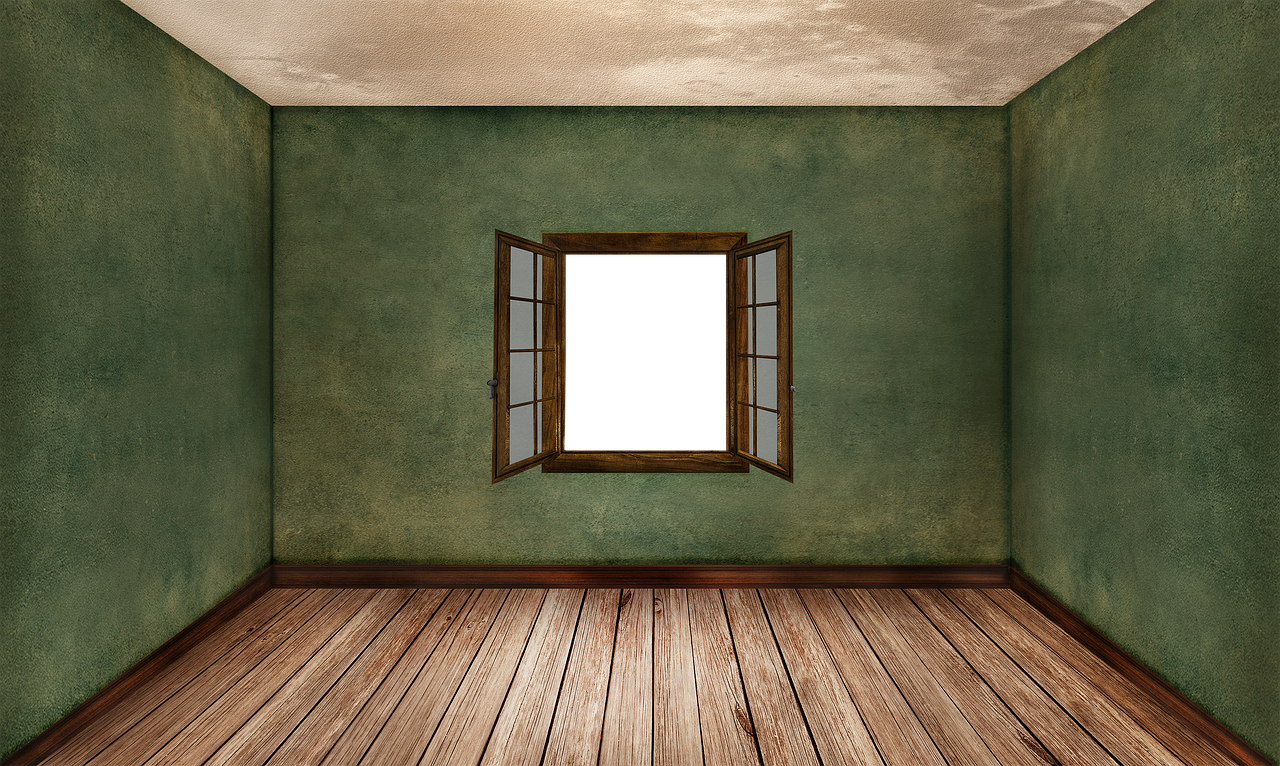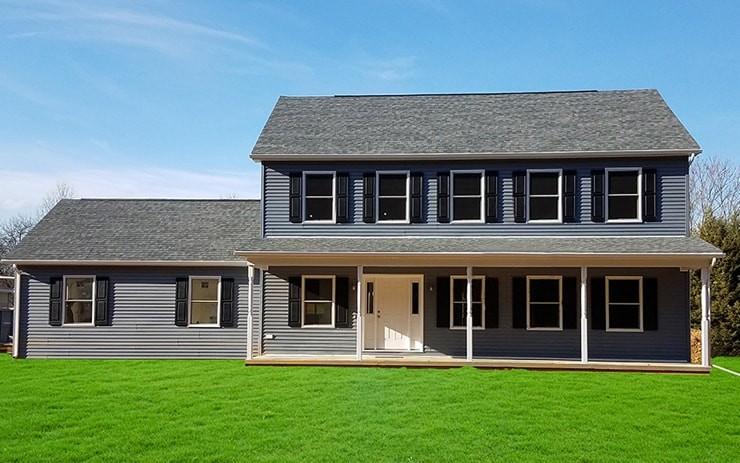Introduction
As the world collectively addresses the urgent need for environmental conservation, sustainable housing solutions are gaining prominence. Among these innovative approaches is the concept of green living through modular home development. Modular homes, with their streamlined construction processes and eco-friendly features, are transforming the housing industry and contributing to a greener, more sustainable future.
“As the world faces the pressing challenges of climate change and environmental degradation, the quest for sustainable housing solutions has become paramount. In this crucial global effort, the concept of green living through modular home development is rapidly gaining recognition. Modular homes, with their efficient construction methods and environmentally conscious design principles, are emerging as a cornerstone in the transformation of the housing industry, propelling us toward a greener, more sustainable future. Here are some compelling aspects of this pivotal shift:
Reduced Carbon Footprint: Modular construction inherently reduces the carbon footprint associated with traditional construction. The controlled factory environment optimizes material use, minimizes waste, and decreases transportation emissions. As a result, the carbon emissions generated during the construction phase are significantly lower, contributing to a healthier planet.
Resource Conservation: Modular homes often employ sustainable and recyclable building materials. The emphasis on responsible resource use ensures that valuable natural resources are conserved, reducing the strain on our ecosystems and lowering the environmental impact of construction.
Energy Efficiency: Many modular homes are designed to exceed energy efficiency standards. Advanced insulation, high-performance windows, and energy-efficient appliances help minimize energy consumption. As homeowners embrace these technologies, they not only reduce their carbon footprint but also enjoy long-term energy cost savings.
Renewable Energy Integration: Modular homes readily accommodate renewable energy solutions such as solar panels. By harnessing clean and renewable energy sources, homeowners further reduce their reliance on fossil fuels and contribute to a more sustainable energy grid.
Urban Density and Sustainable Communities: Modular construction aligns with sustainable urban development practices. The ability to efficiently build in densely populated areas minimizes urban sprawl, conserves open spaces, and reduces the environmental impact of transportation and infrastructure.
Resilience to Climate Change: Some modular homes are engineered to withstand the challenges posed by climate change. These resilient structures provide a safe and sustainable refuge during extreme weather events, contributing to community preparedness and resilience.
Educational Opportunities: Modular home development serves as a practical and educational platform for sustainability awareness. It highlights the importance of eco-friendly construction practices, inspiring homeowners and industry professionals alike to embrace green living.
Advancements in Sustainable Technology: The modular construction industry is continually innovating to incorporate the latest sustainable technologies. From rainwater harvesting systems to smart home automation for energy management, these advancements enhance the environmental performance of modular homes.
Market Demand: Growing consumer awareness and concern for the environment are driving the demand for sustainable housing solutions. The increasing popularity of modular homes reflects a shift toward more sustainable living choices.
Policy Support: Governments and municipalities are recognizing the environmental benefits of modular construction and are introducing policies and incentives to promote sustainable housing practices. These initiatives encourage further adoption of eco-friendly modular homes.
In summary, modular homes are at the forefront of sustainable housing solutions, playing a pivotal role in shaping a greener and more environmentally responsible future. Through their reduced environmental footprint, energy efficiency, and capacity to foster sustainable communities, modular homes are contributing significantly to global efforts to combat climate change and preserve our planet for future generations.”
If you’d like to dive deeper into this subject, there’s more to discover on this page: Unilever Sustainable Living Plan 2010 to 2020
Modular homes are designed with efficiency in mind. The construction process in a controlled factory environment minimizes waste by optimizing the use of materials. Builders can precisely measure and cut materials to reduce excess and improve resource utilization, reducing the ecological footprint of the construction process.
Furthermore, modular home construction can incorporate eco-friendly materials and sustainable building practices. Many modular home manufacturers prioritize environmentally responsible choices, such as using recycled or renewable materials, low-VOC (volatile organic compounds) paints and finishes, and energy-efficient appliances. This commitment to sustainability aligns with the growing demand for eco-conscious housing options, making modular homes an excellent choice for those who want to live in an environmentally friendly residence without compromising on quality or style.
Don’t stop here; you can continue your exploration by following this link for more details: G20 Bali Leaders’ Declaration | The White House

Sustainability in modular home development extends to energy-efficient design and construction. These homes are equipped with modern insulation, advanced windows, and energy-efficient heating and cooling systems. As a result, they consume less energy for climate control, reducing greenhouse gas emissions and homeowners’ energy bills.
Sustainability in modular home development extends to energy-efficient design and construction. These homes are equipped with modern insulation, advanced windows, and energy-efficient heating and cooling systems. As a result, they consume less energy for climate control, reducing greenhouse gas emissions and homeowners’ energy bills. This eco-friendly approach not only benefits the environment but also offers long-term cost savings, making modular homes a smart choice for environmentally-conscious families.
Explore this link for a more extensive examination of the topic: CABN – CABN.CO LTD

Modular home manufacturers prioritize the use of sustainable and environmentally friendly materials. From responsibly sourced timber to low-VOC paints and adhesives, every component is carefully selected to minimize environmental impact. This commitment to green building materials ensures that the construction process is eco-conscious from start to finish.
“Modular home manufacturers are at the forefront of sustainable construction practices, consistently prioritizing the use of environmentally friendly materials throughout the entire building process. This dedication to sustainability extends beyond the initial construction phase and encompasses various aspects of the home, demonstrating a holistic commitment to a greener future.
Responsible Sourcing: One of the fundamental pillars of eco-conscious modular home construction is the responsible sourcing of materials. Manufacturers prioritize the use of sustainably harvested timber, ensuring that the forests providing these resources are managed and replenished in an environmentally responsible manner. This practice helps combat deforestation and preserves valuable ecosystems.
Low-VOC Paints and Adhesives: Volatile organic compounds (VOCs) found in traditional paints and adhesives can release harmful chemicals into the air, contributing to indoor air pollution and posing health risks. Modular home builders opt for low-VOC or VOC-free paints and adhesives, creating healthier indoor environments for occupants while minimizing harmful emissions into the atmosphere.
Energy-Efficient Insulation: Superior insulation is a hallmark of modular homes, not only enhancing energy efficiency but also reducing the need for excessive heating and cooling. This contributes to lower energy consumption, reduced greenhouse gas emissions, and decreased utility costs for homeowners.
Energy-Efficient Appliances: Many modular homes come equipped with energy-efficient appliances, such as ENERGY STAR-rated products, which consume less energy and water. This not only reduces utility bills but also lessens the environmental impact associated with energy and resource consumption.
Waste Reduction: The controlled factory environment of modular construction minimizes material waste. Manufacturers carefully plan and optimize material usage, reducing the amount of discarded construction debris sent to landfills. This practice aligns with the principles of sustainability by conserving resources and reducing landfill impact.
Recyclable Materials: Modular homes are designed to be disassembled and relocated if needed, and the materials used are often recyclable. This means that at the end of a home’s lifecycle, the components can be repurposed or recycled, minimizing waste and contributing to a circular economy.
Renewable Energy Integration: Many modular home designs incorporate renewable energy sources such as solar panels or wind turbines. These technologies harness clean, renewable energy, further reducing the carbon footprint of the home and offering long-term energy savings.
Water-Efficient Fixtures: Eco-conscious modular homes are equipped with water-saving fixtures, such as low-flow toilets and faucets. These fixtures reduce water consumption, helping conserve this precious resource and lower water bills for homeowners.
By embracing sustainable building materials and practices, modular home manufacturers not only create environmentally friendly homes but also set a positive example for the construction industry as a whole. This commitment to sustainability aligns with the broader global efforts to combat climate change and promote responsible resource management, making modular homes a compelling choice for environmentally conscious homeowners.”
You can also read more about this here: 18 Inexpensive Sustainable Homes Almost Anyone Can Afford

One notable feature of modular homes is their minimized impact on the construction site. Since much of the assembly occurs in a factory setting, there’s less disruption to the local ecosystem. Traditional construction often involves heavy machinery, site excavation, and increased soil disturbance, which can negatively affect local flora and fauna. Modular homes help preserve the natural surroundings.
Modular homes promote environmental sustainability by reducing on-site construction impact. With the majority of assembly done in a controlled factory environment, there’s less disruption to the local ecosystem. Unlike traditional construction, which often involves heavy machinery, extensive site excavation, and increased soil disturbance, modular homes help protect and preserve the natural surroundings, contributing to a greener, more eco-friendly approach to housing.
Looking for more insights? You’ll find them right here in our extended coverage: High-quality health systems in the Sustainable Development Goals …

Green living isn’t just about preserving the environment; it also benefits homeowners economically. Modular homes’ energy-efficient features translate to lower utility bills, providing long-term cost savings.
Certainly, here’s an extended idea:
“Embracing green living through modular homes goes beyond environmental benefits; it’s a wise financial choice too. These homes come equipped with energy-efficient features that not only reduce your carbon footprint but also lead to significant long-term savings on utility bills. By investing in a modular home, homeowners can enjoy both a comfortable, eco-friendly lifestyle and economic advantages that keep giving back.”
For additional details, consider exploring the related content available here FACT SHEET: President Biden’s Budget Lowers Housing Costs and …

The use of low-VOC materials in modular homes contributes to improved indoor air quality. Reduced exposure to harmful chemicals can lead to better health for occupants, particularly those with allergies or respiratory issues.
The conscious use of low-VOC (Volatile Organic Compounds) materials in the construction of modular homes represents a significant step toward promoting healthier indoor environments. These materials, known for emitting fewer harmful chemicals, have a positive impact on indoor air quality, and this has far-reaching benefits for the well-being of occupants, particularly those who are sensitive to allergens or have respiratory issues.
Improved Air Quality: Low-VOC materials are designed to release fewer volatile compounds into the indoor air. This means that the air inside your home is less likely to contain pollutants that can contribute to respiratory problems, headaches, and other health issues. As a result, the indoor environment becomes fresher and more pleasant to breathe, promoting overall comfort and health.
Allergy and Asthma Relief: For individuals with allergies or asthma, the reduction of indoor air pollutants is especially vital. Low-VOC materials can significantly decrease the presence of irritants that may trigger allergic reactions or exacerbate respiratory conditions. This can lead to fewer allergy symptoms, reduced asthma attacks, and an overall improvement in the quality of life for those affected.
Enhanced Sleep and Productivity: Improved indoor air quality resulting from low-VOC materials can lead to better sleep patterns and increased productivity. When the air is cleaner and free from irritants, it’s easier to breathe deeply and rest peacefully, helping occupants wake up refreshed and ready to tackle the day’s challenges.
Long-Term Health Benefits: Over time, the health advantages of living in a home constructed with low-VOC materials can translate into long-term benefits. Reduced exposure to harmful chemicals can lower the risk of chronic health conditions, contributing to a higher quality of life as occupants age.
Environmental Responsibility: Aside from personal health benefits, the use of low-VOC materials aligns with environmental responsibility. These materials are often more sustainable and have a reduced impact on the environment during production and disposal. Choosing eco-friendly options not only benefits your family but also contributes to a greener, more sustainable future.
In essence, opting for low-VOC materials in modular home construction goes beyond aesthetics and durability; it’s a commitment to the well-being of your family. By creating a healthier indoor environment with improved air quality, you’re not only protecting your loved ones but also enhancing their overall quality of life. This choice embodies a holistic approach to home construction that prioritizes both environmental sustainability and personal health, making it a win-win for everyone involved.
If you’d like to dive deeper into this subject, there’s more to discover on this page: Development of Smart Interior Environmental Mobile App for Health …

Living in a modular home often encourages a more sustainable lifestyle. Homeowners tend to be more conscientious about their ecological footprint, leading to environmentally friendly choices in their daily lives.
Living in a modular home not only promotes sustainable living but also fosters a sense of responsibility towards the environment. Homeowners often find themselves making eco-conscious decisions beyond their housing choice. These decisions encompass recycling, reducing energy consumption, conserving water, and embracing eco-friendly transportation options. The modular home becomes a catalyst for a broader commitment to green living and sustainable practices that benefit both the homeowners and the planet.
To expand your knowledge on this subject, make sure to read on at this location: Sustainable Lifestyles | UNSSC | United Nations System Staff College

By choosing a modular home, homeowners directly contribute to environmental conservation efforts. These homes are an excellent example of how modern technology and sustainable practices can coexist to benefit both individuals and the planet.
“Modular homes stand as a testament to the harmonious coexistence of modern technology and sustainable practices, offering homeowners the opportunity to make environmentally conscious choices that benefit both individuals and the planet.”
To delve further into this matter, we encourage you to check out the additional resources provided here: Sustainable Design | GSA

Conclusion
Green living through modular home development represents a promising solution to the pressing challenges of environmental sustainability. With efficient resource utilization, energy-efficient design, eco-friendly materials, and reduced site disturbance, modular homes offer a sustainable and cost-effective alternative to traditional housing. Choosing a modular home isn’t just a choice for comfortable living; it’s a choice for a greener, more sustainable future for generations to come.
Green living through modular home development represents a promising solution to the pressing challenges of environmental sustainability. In an era where our ecological footprint is of increasing concern, modular homes stand out as beacons of environmentally responsible living. Here’s how they contribute to a more sustainable future:
Efficient Resource Utilization: Modular homes are built with efficiency in mind. The precision of factory-based construction minimizes material waste, as materials are ordered and cut to precise measurements. This efficient use of resources reduces the demand for raw materials, conserving natural resources.
Energy-Efficient Design: The energy-efficient design of modular homes goes beyond the basics. They incorporate advanced insulation, low-emissivity windows, and airtight construction that helps maintain comfortable indoor temperatures year-round. These features reduce the need for excessive heating and cooling, leading to significant energy savings.
Eco-Friendly Materials: Sustainable building materials, such as reclaimed wood, recycled steel, and environmentally friendly paints and finishes, are often used in modular construction. These choices not only reduce the demand for virgin resources but also promote the use of materials with a lower environmental impact.
Reduced Site Disturbance: Traditional construction sites can disrupt local ecosystems, causing soil erosion and disturbing wildlife. Modular homes minimize these disturbances, as the majority of the construction work is completed off-site. This approach preserves the natural surroundings and minimizes the environmental footprint of the building process.
Solar and Renewable Energy Integration: Many modular homes are designed to incorporate solar panels and other renewable energy sources seamlessly. Harnessing clean and renewable energy from the sun reduces reliance on fossil fuels, lowers greenhouse gas emissions, and contributes to a cleaner environment.
Water Conservation: Modular homes often feature water-saving fixtures and appliances, such as low-flow toilets and efficient faucets. Additionally, rainwater harvesting systems can be integrated into the design, conserving water resources and reducing the strain on municipal water supplies.
Reduced Carbon Footprint: The combination of reduced construction waste, energy-efficient design, and eco-friendly features significantly lowers the carbon footprint of modular homes. This aligns with global efforts to combat climate change and reduce greenhouse gas emissions.
Long-Term Sustainability: Modular homes are built to last, with durable materials and construction techniques that contribute to their longevity. This long-term sustainability reduces the need for frequent renovations and replacements, conserving additional resources.
Cost-Effective Sustainability: The sustainable features of modular homes often translate into cost savings for homeowners. Lower energy bills, reduced maintenance costs, and potential tax incentives for energy-efficient features make modular homes an economically attractive option for those looking to live sustainably.
Choosing a modular home isn’t just a choice for comfortable living; it’s a choice for a greener, more sustainable future for generations to come. By embracing efficient resource utilization, energy-efficient design, and eco-friendly materials, modular homes offer a pathway to reducing our impact on the environment while enjoying the benefits of modern, comfortable living.
To delve further into this matter, we encourage you to check out the additional resources provided here: Sustainable consumption and production
More links
Should you desire more in-depth information, it’s available for your perusal on this page: 18 Inexpensive Sustainable Homes Almost Anyone Can Afford
